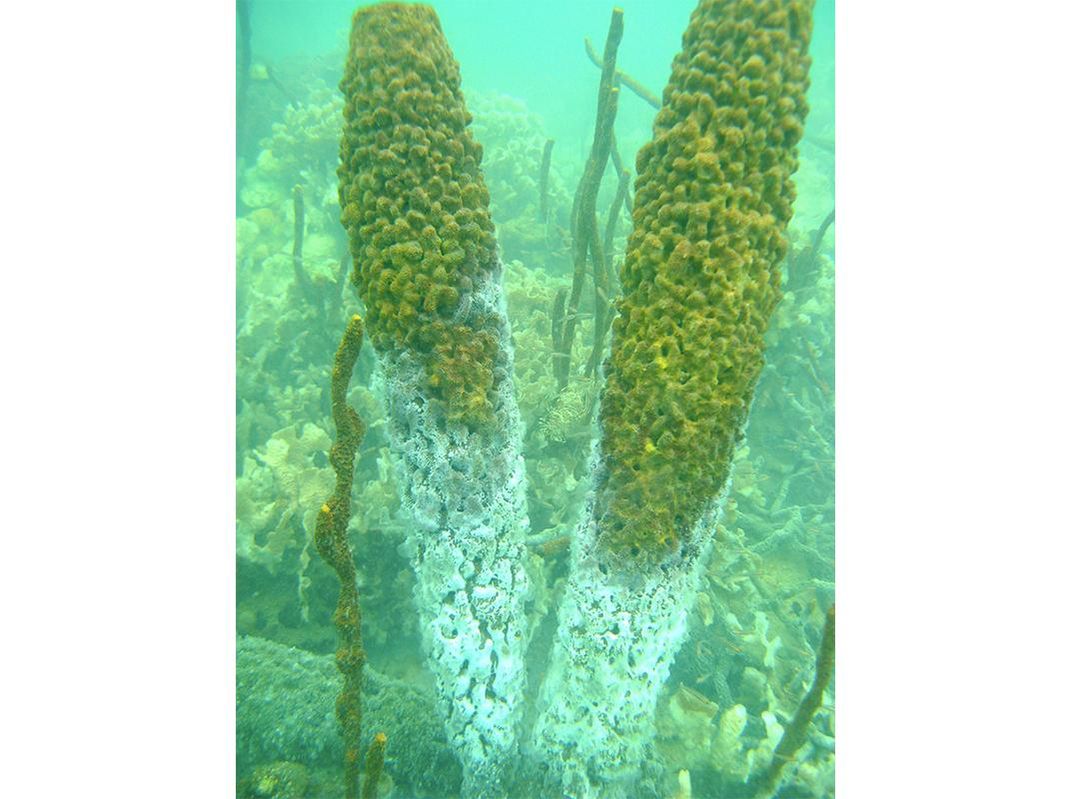Coral Reefs Now Face Deep Water Dead Zones, As If Climate Change Were Not Enough
A Smithsonian scientist says there may be a greater prevalence of undocumented oxygen-starved deep coastal waters
/https://tf-cmsv2-smithsonianmag-media.s3.amazonaws.com/filer/2d/45/2d45608a-f181-4405-acb1-e888b46fe12f/altieri_et_al_survey_dead_reefweb.jpg)
The threat of warming water to coral reefs is well-known, as demonstrated by the ongoing bleaching and death of large swaths of Australia's Great Barrier Reef. A group of scientists with the Smithsonian Tropical Research Institute (STRI) believe that another, related threat to tropical reefs is being ignored—hypoxia, or low oxygen levels in water that can create large dead zones.
“They can form naturally but their number and severity have increased dramatically in the recent decades,” says Andrew Altieri, a STRI staff scientist and lead author of a new paper on dead zones. These zones "are exacerbated by eutrophication (a density of nutrients) and sewage inputs in coastal waters, basically causing phytoplankton blooms and these plankton die and they decompose and that draws off oxygen,” he says.
Coastal bays, lagoons and estuaries are especially vulnerable to hypoxia because of the runoff of excess nutrients from farms, lawns and sewage.
Altieri's research focused on Bahia Almirante, a large, semi-enclosed bay of about 174 square miles in the Bocas del Toro region of Panama. STRI has been conducting a series of studies on the dead zone to gauge its potential capacity to recover. But when Altieri turned his attention to surveying global research on dead zones, he found what appears to be a bias at play in the research.
“What I did was I went to all of the papers that first described a dead zone in the tropics and in the temperate areas and I looked to see whether the lead author on those papers was from a temperate institution or a tropical institution. . . In a temperate dead zone it's always described by an author from a temperate institution. Usually from the country where the dead zone is located. . . so people are looking in their own backyards.”

Research institutions from tropical regions tend to be poorly funded compared with those from temperate regions. As a result, relatively few tropical dead zones have been recorded. Tropical dead zones may be a much larger problem than scientists had realized.
“That sort of sets the stage for the need to look in the tropics and understand what's happening there with hypoxia,” Altieri says.
Like fish or humans, corals take in oxygen and emit carbon dioxide through a process of respiration. When oxygen levels drop they begin to die for the same reason that other animals would. But Altieri has found that some species of coral can more successfully deal with low oxygen than others.
Stephanocoenia intersepta, for example, is a species whose colonies look something like squashed basketballs, and it often manages to survive in the Bahia Almirante dead zone even after other types of coral has turned white and died. While it is better than having no corals at all, S. intersepta is not a branching coral and does not provide very good habitat for other species.
As with many environmental issues, warming temperatures will likely make things worse. “That's another reason why I think dead zones are getting worse,” Altieri says. “As climate continues to warm it makes coastal ecosystems more prone to hypoxia.”
Assuming that density of dead zones scales as a function of the length of shoreline, the paper proposes that there could be at least 370 undocumented tropical dead zones.
“We need to look in the tropics,” Altieri says. “It could be very important here. . . when you look at the figures it blows your mind because you look at this deficit in the number of dead zones. I think they haven't been found yet. People aren't looking for them.”
/https://tf-cmsv2-smithsonianmag-media.s3.amazonaws.com/accounts/headshot/JacksonLanders.jpg)
/https://tf-cmsv2-smithsonianmag-media.s3.amazonaws.com/accounts/headshot/JacksonLanders.jpg)